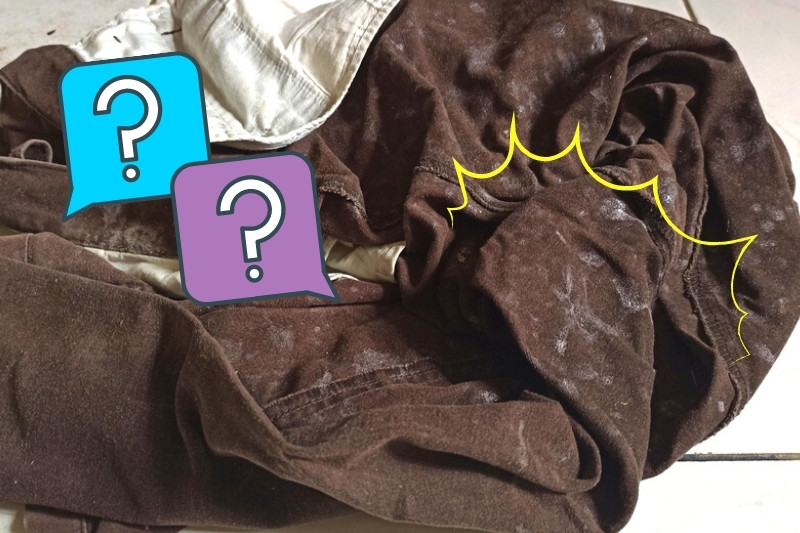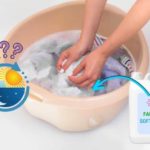It can be very frustrating to find small dark spots on your freshly laundered clothes, only to realise that these pesky marks are the residue left behind by your fabric softener.
There are a handful of reasons that this residue could be left on your clothes, and this article will explain those reasons and, more importantly, detail how to easily remove them, and ensure that they don’t happen again in the future.
What Causes Fabric Softener Residue to Remain on Clothes?

There are a few potential causes of fabric softener residue, the most common being that you may be adding too much fabric softener for the number of clothes you have put into the machine.
Alternatively, you could be adding your fabric softener to the drum of the machine or adding it too early to the drawer, allowing it to come in contact with your clothes before the machine has filled up with enough water.
How to Remove Fabric Softener Residue
The best methods of removal will depend on the type of mark that has been left behind. There are three potential types of stains left by the fabric softener.
Light stains
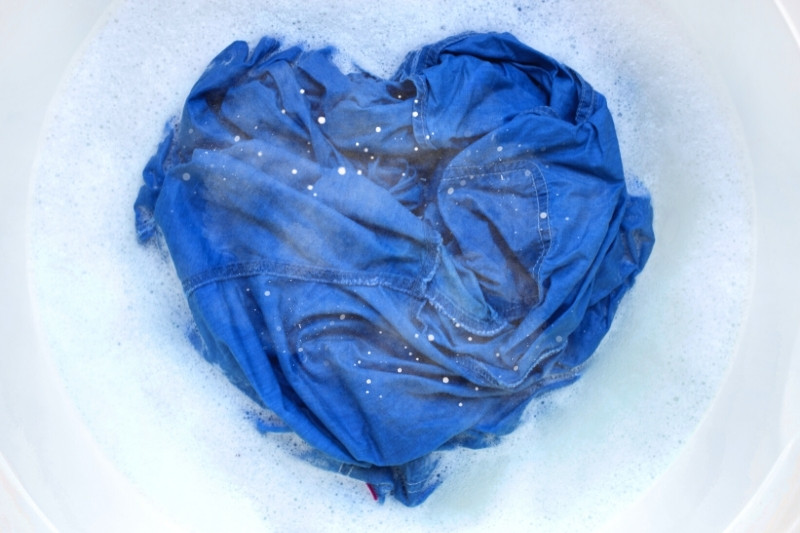
If the stain is light and not too noticeable, you will likely be able to remove it relatively easily, with just warm water and soap.
If you have a toothbrush that you keep for cleaning purposes, then it would be perfect for this task.
First, isolate the stain and wet it slightly with warm water before adding a few drops of either liquid laundry detergent or dishwashing liquid to the stain. Alternatively, a plain (unscented) bar of soap will also suffice.
Rub your chosen soap properly into the stain, using either your finger or your toothbrush and make sure it soaks completely into the affected area.
Once you’re certain the entire stain has been scrubbed you can run the garment through a wash cycle in your washing machine and it should come out bright and clean. Be sure not to use fabric softener in this cycle but do use your usual laundry detergent.
Stubborn stains
For more stubborn stains, the general idea of cleaning the area is the same as for lighter stains but will require a bit more scrubbing, as well as adding in some important soaking time.
It would also be beneficial to use hotter water when you wet the stain and then use your finger or your designated cleaning toothbrush to work the soap fully into the mark.
This time you will need to leave the garment to soak in a bucket or sink full of warm water for at least an hour. Try also adding a few drops of your chosen soap to the water. Then rinse out the item and run it through your machine on your favourite cycle.
If you’re still finding that the stain remains after this method, you can also try using white vinegar in place of your regular detergent. This works to lift stains and brighten the colour of your garments.
Dried stains
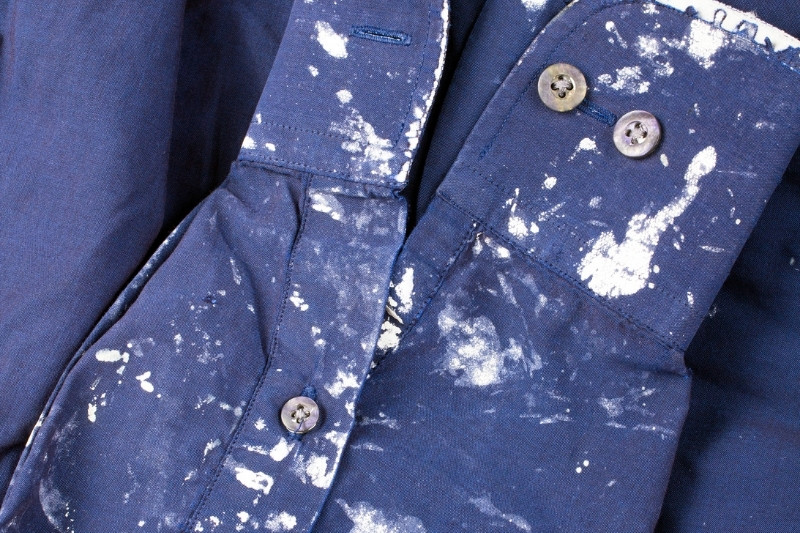
Often, it’s hard to check all our garments for stains right as they come out of the machine, and we don’t always notice any marks while hanging the clothes up to dry.
This means that sometimes the clothes will dry with the fabric softener residue mark, making it considerably harder to remove.
In the case of a very stubborn stain that has dried into the garment, there are still a few things that you could try, but you will need oxygenated bleach for the best results.
First, fill a sink or bucket with warm water and then add a quarter of a scoop of oxygen bleach. Next, you will need to soak the stained item for at least three or four hours, or even overnight if the stain is particularly bad.
Once the stain is properly soaked you can run the garment through a normal hot wash cycle, without any detergent or fabric softeners added. Make sure the stain has been properly eliminated before you dry the garment.
Hot to Prevent Fabric Softener Residue
There are a few ways to make sure that you avoid fabric softener stains in the future.
Check the instructions

The first thing to do is to always check that you’re properly following the instructions on the back of the fabric softener bottle.
Every brand has different guidelines, and you may have changed brands but not thought to change how much of the product you add to your washing machine. Too much fabric softener will almost certainly lead to residue marks.
Dilute the softener
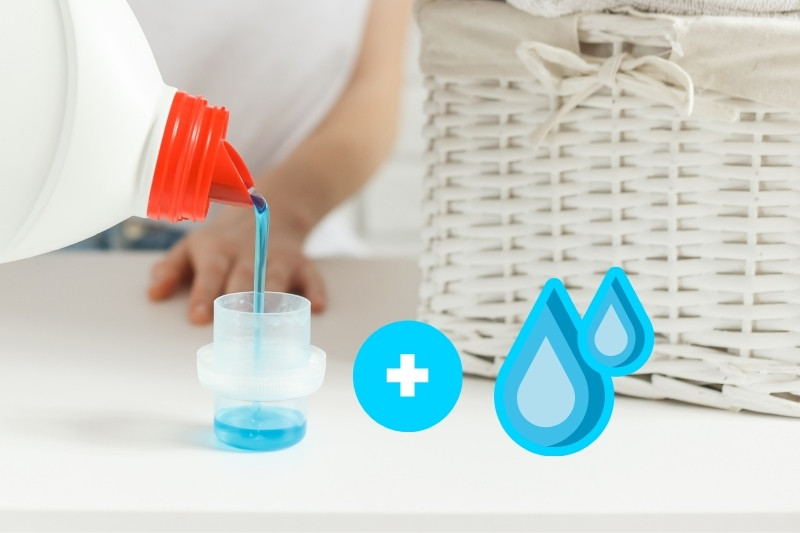
Some brands of fabric softeners are much more concentrated than others.
If you feel that your brand is too concentrated, but you’re attached to it because you love the scent, or you feel it works particularly well then you could try to dilute the softener slightly by adding about a capful of water to the drawer with your softener.
Ideally, this will keep the scent and quality of your softener while also eliminating the potential of any residue being left behind.
Don’t let the fabric softener come into contact with your clothes
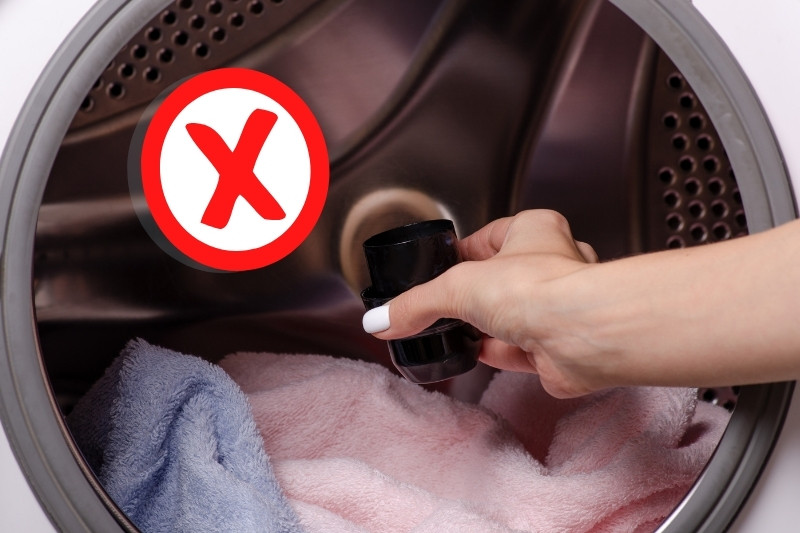
It’s also important to make sure that you are not allowing the fabric softener to come into direct contact with your clothes.
If you have a washing machine without a dispenser drawer, make sure that you allow the drum of your machine to fill with water before you add any softener.
Don’t overload
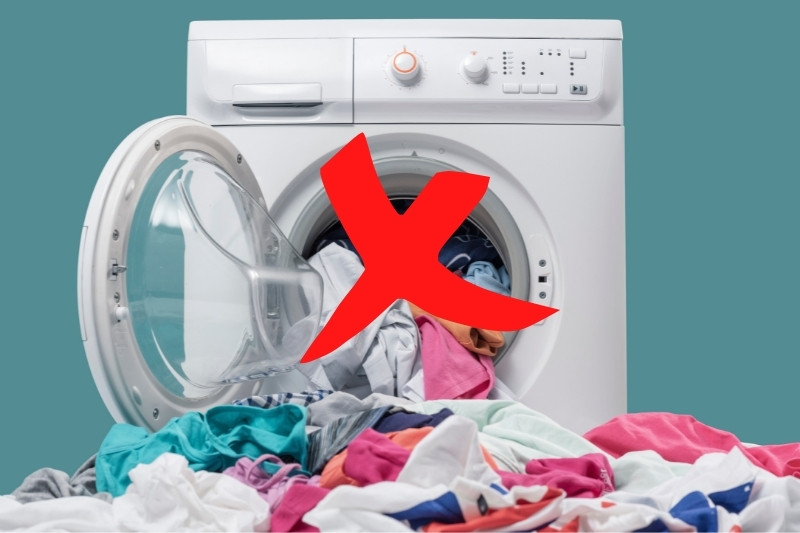
Overloading your machine can also cause your fabric softener to struggle to properly disperse into to machine and reach all of your clothes equally. Be sure that you have the correct amount of clothes in your machine.
You can also try to clean out your fabric softener dispenser on a regular basis, to ensure the liquid is being distributed into the machine at the right time and with the correct amount.
Conclusion
Fabric softener stains are frustrating, but they are a problem with a quick and easy solution. The methods in this article will almost always be effective in removing the residue from your clothes.
In addition, it’s important to always check on the label of your garment that it’s alright to use warm or hot water before you start the cleaning process.

An adventurous book lover with an animal obsession and a proclivity for travel and spontaneity. Used to passionately despise cleaning but has grown to enjoy it thanks to learning all the best tricks and shortcuts to guaranteeing a stress-free routine and a spotless home.
